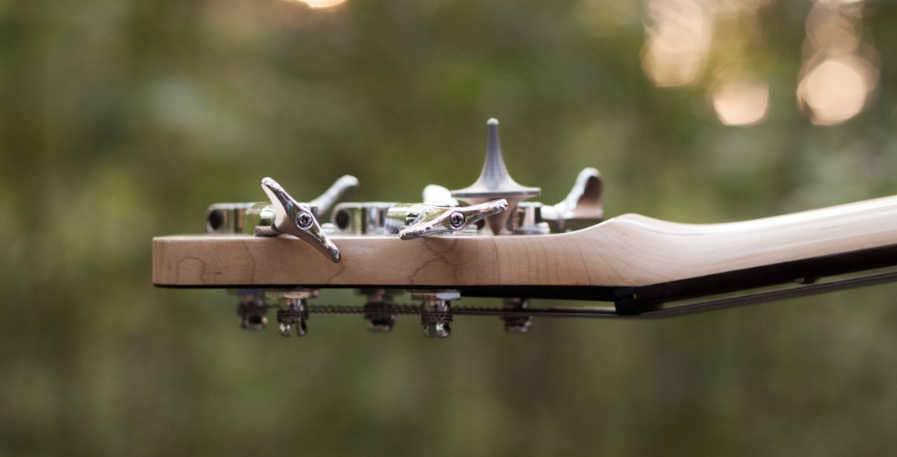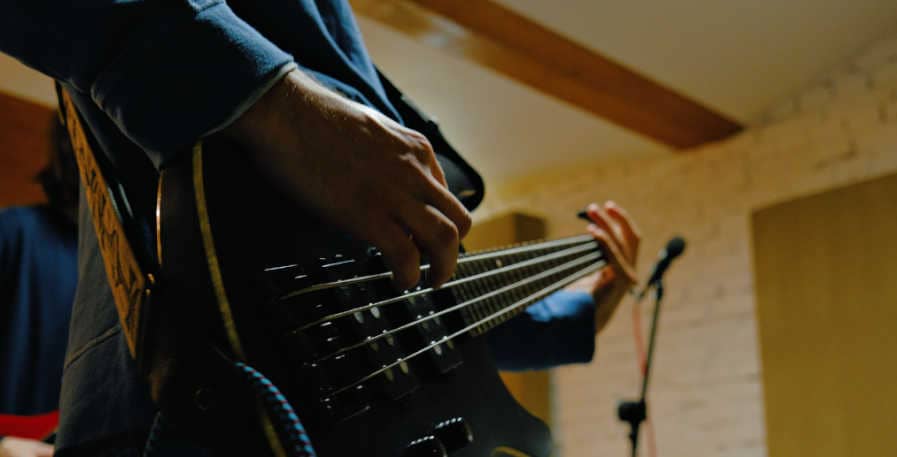Flatwound bass strings are known for their musky tone and their smooth playability. They are also known for seemingly lasting forever.
While I stick to roundwounds nowadays, I`ve done my fair share of experimenting with flats as well. What I found when talking to other bassists at the time, was that their views on the longevity of flatwounds varied greatly.
Therefore, I decided to write this article to clarify why some bassists think flatwounds can last for a lifetime, while others don`t. I will also clear up some common misconceptions about what happens to flatwound strings over time.
How long do flatwound bass strings last?
While the tone of flatwound strings will change over time, they can last for decades if a bass player prefers their worn sound. It is common among bassists who use flatwound strings to use a set until a string breaks.
Unopened bass strings have a long shelf life and can effectively last forever. However, flatwound strings can seemingly last equally long even when they are strung on a bass and played regularly. Here are the 3 main reasons why:
Winding – Roundwound strings need to be cleaned or switched more often than flatwounds. This is because roundwounds have a different winding than flatwounds, which makes it easier for sweat, oil, and dirt to dig into them. Flatwounds on the other hand don`t have the same type of crevices in the winding, which makes it harder for dirt to dig into the strings. As a result, flatwounds lose their tone slower. Furthermore, they don`t need to be cleaned nearly as often as roundwounds, which further increases their lifespan.
No loss of brightness – Flatwound are known for their musky and smooth sound. While the strings will change in tone over time, they will still retain these key characteristics. Roundwounds are known for a brighter tone, which will diminish quicker. In Flatwounds there is little brightness to be lost, which means they don`t need to be switched out nearly as often.
Tonal preference – All strings will eventually start to sound “dead”. For some bassists, this means that the strings have done their job and are getting thrown into the bin. Flatwound players on the other hand, often prefer the sound of played-out strings. While some find the tone of used strings to sound dull, this can align well with the smooth and deep tone that flatwound players are looking for.
Do you need to change flatwound strings?
Flatwound strings do not need to be changed if you are looking for a smooth tone and don`t need to sustain notes for long. To maintain a slightly bright tone with more resonant sustain, flatwound strings should be changed occasionally.
You never need to change flatwound strings. Whether you should switch them out or not depends largely on what type of tone you are looking for.
A flatwound set with brightness, freshness and resonant sustain like D’Addario Chromes will need to be changed occasionally in order to fully maintain these characteristics.
Once these strings “die” they will take on a more typical flatwound tone. This can sound great too, and some bassists will opt for strings of this kind for this exact reason.
Some players find sets such as the D’Addario Half-Rounds to be a great middle-ground between these options. These are roundwound strings that are later polished to be more resemblant to flatwounds.
Like the Chromes, they will change in tone over time. However, when they are played out they will still retain a good bit of their brightness. As a result, strings of this kind can be played for decades, while still retaining a certain degree of brightness.

Can you reuse flatwound bass strings?
In general, flatwound strings can be reused without issue. As long as the strings are kept in good condition they can be removed from a bass and restrung. The strings can also be rejuvenated to some extent by boiling or cleaning them.
If you want to take flatwounds strings off your bass, you can do so. If you are not going to restring them in a couple of days, it`s a best practice to store them air-tight and coiled. These zip-lock bags are slightly larger than regular bass string packages and will fit any type of flatwound strings.
Tip: Avoid bending the tip of the strings if they have been curled from the tuning pegs. This will damage the strings. Curl the strings as they are without making bends in them and seal them away.
If you are looking to clean and then reuse flatwounds strings, you can do so. It is however harder to rejuvenate the tone of flatwounds than roundwound strings.
As mentioned earlier, dirt and oil will have a harder time digging into the strings. As a result, cleaning or boiling them will have less of an impact on the overall sound of the strings. On the flipside, flatwound strings require less maintenance in the first place.
How long does it take to break in Flatwounds?
Depending on how often the flatwound strings are played, it will generally take 2-6 weeks to break them in. During this time period, the strings will commonly start to sound darker and start feeling easier to play.
Bassists tend to have different ideas of what breaking in flatwound strings means.
I have heard some flatwound players claim that it took a couple of years for their strings to break in. Others have said that it took them a couple of gigs.
The reason I say it will generally take 2-6 weeks, is because this is where most flatwounds will have the most noticeable change in tone and playability. Therefore, I believe the majority of bassists will feel like the strings have broken in around this time period.
Conclusion
So how often should you change flatwound strings? If you are looking to retain some brightness in their tone, somewhere between every 4-6 months depending on how much you play.
If you are looking for a warm and smooth tone, a set of flats can last for decades as long as they don`t snap.
There are no right and wrong answers when it comes to tone. However, it is wise to keep in mind that flatwounds are a staple in some genres and hardly ever used in others.
For jazz or blues, you might need a set of old flatwounds to fit the character and feel of the band. In metal or punk, the lifeless sound of flats could easily ruin the drive and power of a song with their smooth tone.
So in closing, you might never need to change a set of flatwounds. If the sound of decade-old flats fits the type of music you want to play, then great. If not, I advise against using old flats for the sake of saving money on strings or for not having to deal with the maintenance aspect of switching strings. It is merely a stylistic choice, and my recommendation is to treat it as such.

